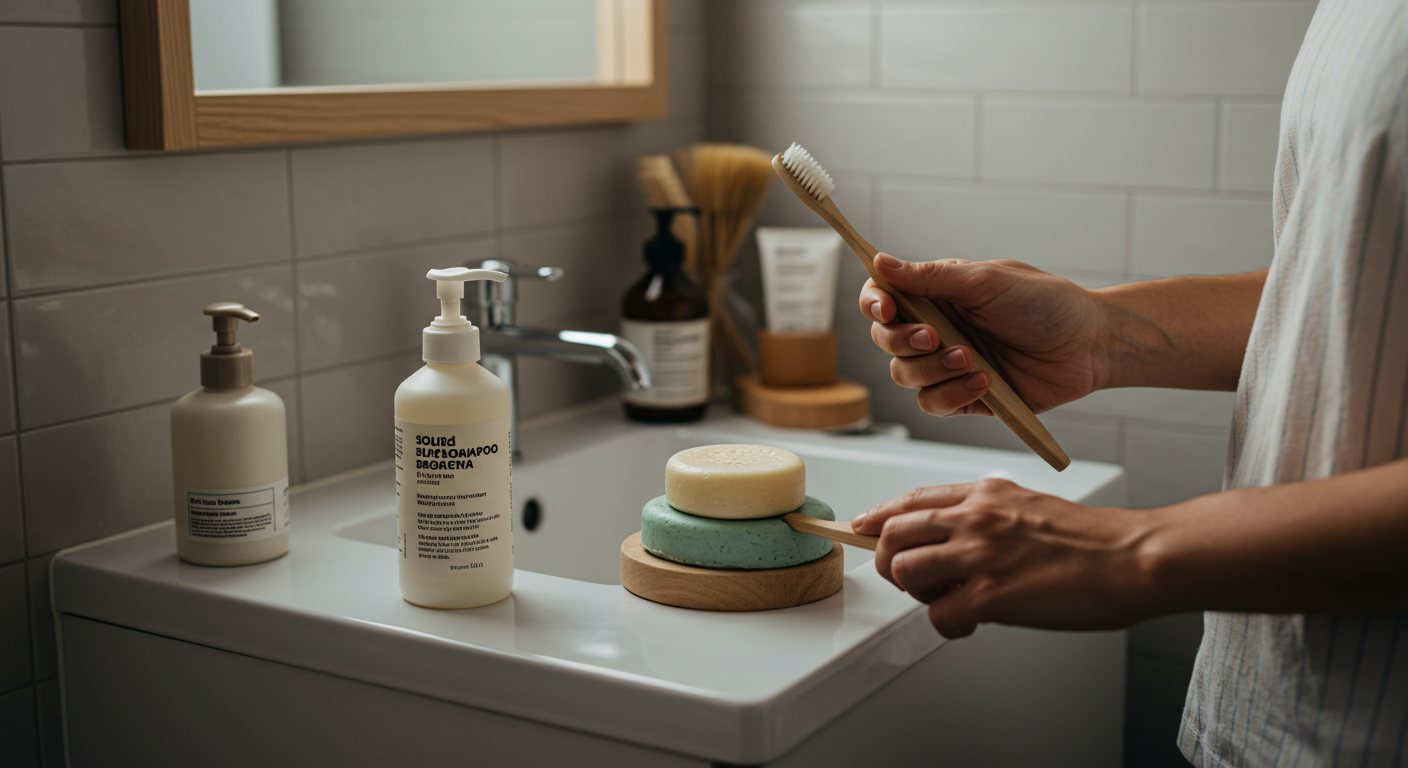Are you an eco-conscious consumer looking to minimize your environmental footprint? The bathroom, often a hidden source of plastic waste, presents a fantastic opportunity to create a truly sustainable space. This guide offers advanced strategies and actionable insights for a zero-waste bathroom, helping you transform your daily routine and significantly reduce your impact.

Deep Dive into Zero Waste for Your Bathroom
Embarking on a zero-waste journey in your bathroom can seem daunting, but with the right knowledge and dedication, it's incredibly achievable. This involves a shift in mindset, a willingness to explore alternatives, and a commitment to reducing consumption. We'll delve into the core principles of zero waste: reducing, reusing, refusing, repurposing, and recycling.
Advanced Strategies and Insights
1. Assess and Audit: Begin by thoroughly evaluating your current bathroom products. Identify the items that generate the most waste, especially those in single-use plastic packaging. This assessment will guide your transition.
2. Refuse, Reduce, Reuse: Focus on refusing unnecessary items, reducing your consumption, and reusing what you already have. For example, switch to reusable cotton rounds instead of disposable ones. Use refillable containers for liquid soap and shampoo.
3. DIY & Bulk Buying: Embrace DIY solutions for cleaning products and personal care items. Many recipes for effective, eco-friendly cleaners can be made with simple ingredients. Buying in bulk is also key; it cuts down on packaging and often saves money.
4. Composting & Recycling: Implement a composting system for organic waste like hair and natural fiber cotton swabs. Familiarize yourself with your local recycling guidelines to ensure proper disposal of recyclable materials.
Optimizing Your Sustainable Bathroom
1. Dental Care Revolution: Ditch plastic toothbrushes. Opt for bamboo toothbrushes, which are biodegradable. Choose toothpaste in glass jars or tablets to avoid plastic tubes. Consider a bamboo tongue scraper. For flossing, try silk floss with a refillable glass container or compostable floss picks.
2. Hair Care Essentials: Shampoo bars and conditioner bars are excellent alternatives to plastic bottles. Look for brands that package their products in compostable or recyclable materials. Use a wooden comb or brush and consider a safety razor for shaving, which has replaceable blades, instead of disposable plastic razors.
3. Skincare & Makeup Upgrades: Choose skincare products in glass bottles or refillable containers. Opt for solid lotions, balms, and deodorants. Seek out makeup brands that offer refillable palettes or sustainable packaging. When buying makeup, look for brands that use ingredients that are both good for your skin and the environment. Consider reusable cotton rounds instead of disposable ones for makeup removal.
4. Period Care: Explore menstrual cups, reusable pads, or period underwear to eliminate the waste associated with disposable pads and tampons. These options not only reduce waste but can also save you money in the long run.
Case Study: Thriving on an Advanced Sustainable Path
Many individuals have successfully transformed their bathrooms into zero-waste havens. These people often document their journey to inspire others. By adopting a mindful approach, researching available options, and staying persistent, you can create a beautiful, functional, and eco-friendly bathroom. By taking small steps and staying committed, you can make a big difference. You may inspire others to start on a similar path to reducing waste. [[COMMERCIAL_1]]
Navigating Complex Environmental Challenges
One of the biggest hurdles is finding replacements for products that are difficult to find in zero-waste options. Researching brands and products may take some time. Be patient with the process; every swap you make is a positive step toward a zero-waste lifestyle.
Integrating Advanced Sustainable Practices
1. Water Conservation: Install a low-flow showerhead and faucet aerators to conserve water. Consider a greywater system if feasible. Be mindful of water usage while brushing your teeth and shaving.
2. Energy Efficiency: Switch to LED lighting, which uses significantly less energy than traditional bulbs. Unplug appliances when not in use, as they still consume energy in standby mode.
3. Eco-Friendly Cleaning: Make your own cleaning products using natural ingredients like vinegar, baking soda, and essential oils. Choose refillable spray bottles and reusable cloths over disposable wipes.
Scaling Your Impact: Beyond Personal Choices
Consider the brands you support. Look for companies with strong sustainability commitments. Support businesses that prioritize ethical sourcing, reduce packaging waste, and offer refill programs. Encourage your family and friends to adopt some of the sustainable practices you've implemented.
Expert-Level Green Living Insights
Continue your education by reading books, blogs, and articles on zero-waste living. Stay informed about the latest sustainable innovations and best practices. Join online communities and engage with other eco-conscious individuals to share ideas and learn from their experiences.